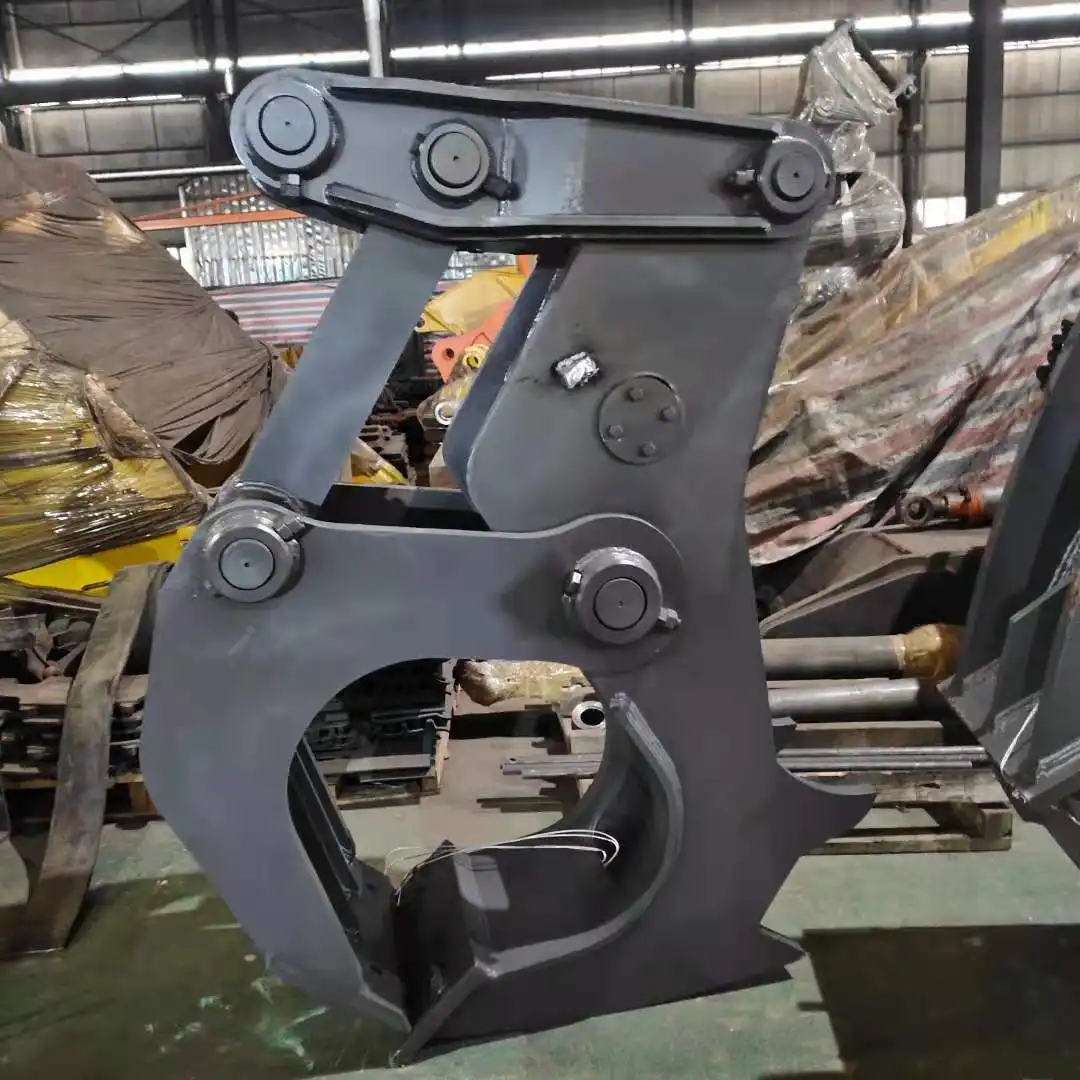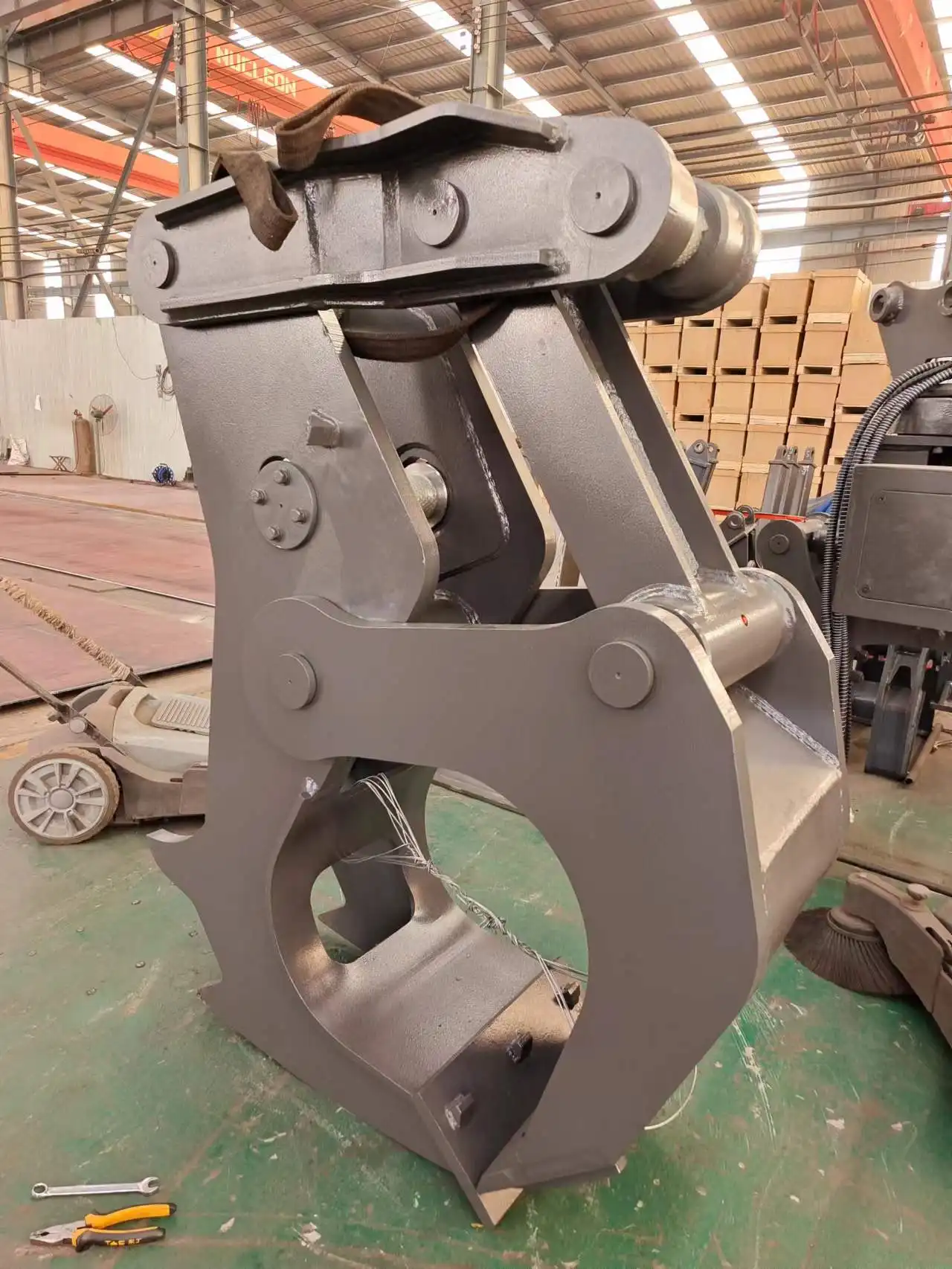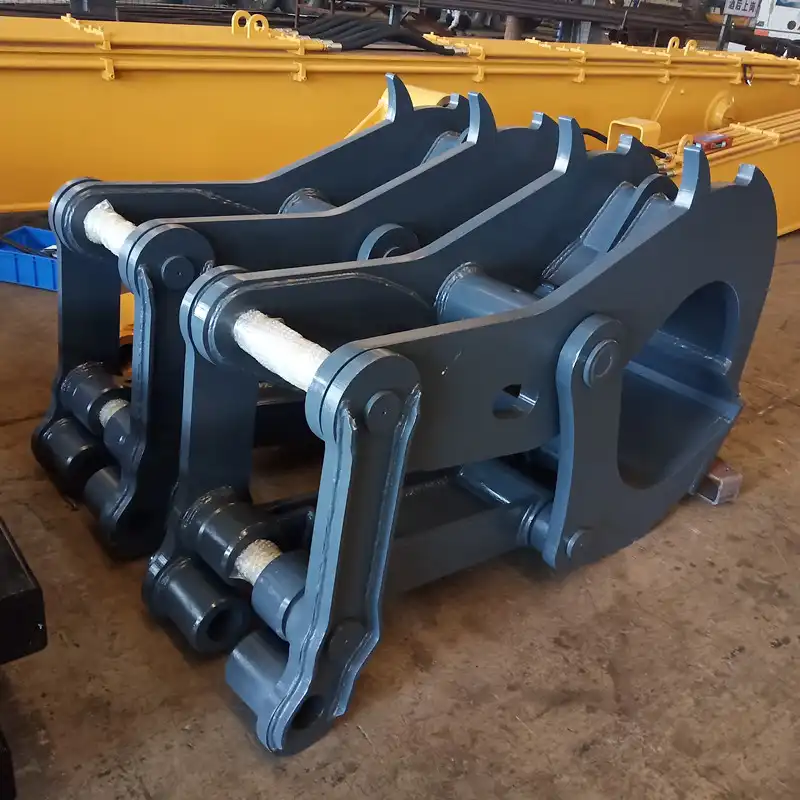What are common problems with an excavator wood splitter?
Excavator wood splitters are powerful attachments that significantly boost efficiency in forestry and land-clearing operations. However, like any mechanical equipment, they can face various issues. Common problems with wood splitters include hydraulic system malfunctions, mechanical wear and tear, and operational challenges. These issues can range from low splitting power due to hydraulic pressure problems to damaged components affecting overall performance.

Troubleshooting hydraulic system issues
Low hydraulic pressure affecting splitting power
One of the most frequent issues wood splitter operators encounter is a decrease in splitting power. This problem often stems from low hydraulic pressure within the system. When the hydraulic pressure drops, the splitter loses its ability to generate the force necessary for efficient wood splitting. Several factors can contribute to this issue:
- Worn hydraulic pump: Over time, the hydraulic pump may deteriorate, leading to reduced pressure output.
- Clogged filters: Dirty or blocked hydraulic filters can restrict fluid flow, causing pressure loss.
- Incorrect fluid levels: Insufficient hydraulic fluid in the system can result in inadequate pressure generation.
- Faulty pressure relief valve: A malfunctioning relief valve may cause the system to bleed off pressure prematurely.
To address low hydraulic pressure, start by checking the fluid levels and condition. Replace or clean filters as needed, and inspect the hydraulic pump for signs of wear. If these steps don't resolve the issue, consult a hydraulic specialist to assess the pressure relief valve and other components.
Hydraulic fluid leaks impacting performance
Hydraulic fluid leaks can severely impact the performance of an excavator wood splitter. These leaks not only reduce the system's efficiency but can also lead to environmental concerns and safety hazards. Common areas prone to leaks include:
- Hose connections and fittings
- Cylinder seals
- Valve bodies
- Pump housings
Regular inspections are crucial for early detection of leaks. Look for signs of fluid on or around the splitter, and pay attention to any unusual noises or decreased performance that might indicate a leak. Promptly repair any identified leaks to maintain optimal splitter function and prevent further damage to the hydraulic system.
Overheating of hydraulic components during operation
Overheating is another common issue that can plague excavator wood splitters. When hydraulic components overheat, it can lead to fluid breakdown, seal damage, and accelerated wear of internal parts. Factors contributing to overheating include:
- Insufficient cooling capacity
- Prolonged operation under heavy loads
- Restricted fluid flow due to blockages or narrow lines
- Incorrect fluid viscosity
To prevent overheating, ensure proper maintenance of the cooling system, including regular cleaning of heat exchangers. Consider installing temperature monitoring devices to alert operators of potential overheating situations. Additionally, using the correct hydraulic fluid grade for your operating conditions can help maintain optimal system temperatures.

Addressing mechanical failures and wear
Worn or damaged splitting wedge reducing efficiency
The splitting wedge is the heart of an excavator wood splitter, and its condition directly affects splitting efficiency. Over time, the wedge can become dull, chipped, or misaligned, leading to decreased performance. Signs of a worn splitting wedge include:
- Increased effort required to split logs
- Incomplete splits or wood getting stuck on the wedge
- Visible damage or rounding of the wedge edge
Regular inspection and maintenance of the splitting wedge are essential. Sharpen the wedge as needed, and replace it if significant damage is present. Proper alignment of the wedge is also crucial for optimal splitting performance.
Loose or broken mounting brackets causing instability
The stability of an wood splitter attachments relies heavily on secure mounting brackets. Loose or broken brackets can lead to dangerous situations and reduced splitting accuracy. Issues with mounting brackets often result from:
- Vibration and repeated stress during operation
- Improper installation or inadequate tightening
- Corrosion or material fatigue
Regular inspection of mounting brackets is crucial. Check for any signs of looseness, cracks, or excessive wear. Tighten all bolts and fasteners to the manufacturer's specifications, and replace any damaged components immediately to ensure safe and efficient operation.
Damaged hoses and fittings leading to system failures
Hydraulic hoses and fittings are vital components of an excavator wood splitter's hydraulic system. Damage to these parts can lead to catastrophic failures and significant downtime. Common issues include:
- Cracked or worn hoses resulting in leaks
- Loose fittings causing fluid loss and pressure drops
- Kinked hoses restricting fluid flow
Implement a regular inspection routine for all hoses and fittings. Look for signs of wear, abrasion, or kinking. Replace any damaged components promptly, and ensure all connections are properly tightened. Using high-quality, compatible hoses and fittings can significantly reduce the risk of failures and extend the life of your hydraulic system.

Preventive measures for common splitter problems
Regular maintenance schedule for excavator wood splitters
Implementing a comprehensive maintenance schedule is crucial for preventing many common problems associated with excavator wood splitters. A well-structured maintenance plan should include:
- Daily visual inspections before operation
- Weekly checks of hydraulic fluid levels and quality
- Monthly inspections of all mechanical components
- Quarterly servicing of the hydraulic system
- Annual overhauls and component replacements as needed
Keeping detailed maintenance records helps track the splitter's performance over time and anticipate potential issues before they become major problems. Regular maintenance not only prevents breakdowns but also extends the lifespan of your equipment, ultimately saving time and money.
Proper storage and protection from environmental factors
Environmental factors can significantly impact the longevity and performance of excavator wood splitters. Proper storage and protection are essential for maintaining the equipment's integrity. Consider the following measures:
- Store the splitter in a covered area when not in use to protect it from rain, sun, and extreme temperatures
- Use protective covers for exposed hydraulic components
- Apply rust-inhibiting coatings to metal surfaces
- Keep the splitter clean and free from debris, especially after use in muddy or dusty conditions
By taking these precautions, you can minimize the risk of corrosion, seal degradation, and other environmental damage that could lead to performance issues or premature component failure.
Operator training to prevent misuse and equipment damage
Proper operator training is a critical yet often overlooked aspect of preventing problems with excavator wood splitters. Well-trained operators can significantly reduce the risk of equipment damage and improve overall efficiency. Key areas of focus for operator training should include:
- Correct startup and shutdown procedures
- Proper splitting techniques for different wood types and sizes
- Recognition of hydraulic system warnings and indicators
- Basic troubleshooting skills
- Safety protocols and emergency procedures
Invest in comprehensive training programs for all operators, and consider refresher courses to keep skills sharp and up-to-date with the latest best practices. Proper training not only prevents equipment damage but also enhances productivity and workplace safety.

Understanding and addressing common problems with excavator wood splitters is crucial for maintaining operational efficiency and equipment longevity. By focusing on hydraulic system maintenance, addressing mechanical wear, and implementing preventive measures, operators can significantly reduce downtime and improve productivity. Regular maintenance, proper storage, and comprehensive operator training form the foundation of a robust strategy to keep your excavator wood splitter performing at its best. Remember, proactive care and attention to these common issues will not only save time and money but also ensure safer and more effective wood splitting operations.
FAQ
1. How often should I service my excavator wood splitter?
Regular servicing is crucial for maintaining optimal performance. Conduct daily visual inspections, weekly fluid checks, and monthly mechanical inspections. A comprehensive service should be performed quarterly, with annual overhauls as needed.
2. What causes a sudden loss of splitting power in my excavator wood splitter?
Sudden power loss can be due to low hydraulic pressure, fluid leaks, or a malfunctioning pressure relief valve. Check fluid levels, inspect for leaks, and consult a hydraulic specialist if the issue persists.
3. How can I prevent my excavator wood splitter from overheating?
To prevent overheating, ensure proper cooling system maintenance, use the correct hydraulic fluid, avoid prolonged operation under heavy loads, and consider installing temperature monitoring devices.
4. What signs indicate that the splitting wedge needs replacement?
Signs include increased effort to split logs, incomplete splits, wood getting stuck on the wedge, and visible damage or rounding of the wedge edge. Replace the wedge if sharpening doesn't improve performance.
5. Is operator training really necessary for using an excavator wood splitter?
Yes, proper operator training is essential. It helps prevent equipment damage, improves efficiency, enhances safety, and can significantly extend the lifespan of your excavator wood splitter.
Excavator Wood Splitter Factory
At Tiannuo Machinery, we specialize in manufacturing high-quality excavator attachments. Our product line extends beyond wood splitters to include a wide range of equipment for various industries. We offer railway maintenance equipment such as sleeper changing machines and tamping machines, excavator modification equipment like lifting and tilting cabs, and various engineering arms including extended and pile driving arms. Our excavator accessories catalog features an array of buckets, clamps, and specialized attachments to meet diverse operational needs. For those interested in our excavator wood splitters or any of our other products, contact us at boom@stnd-machinery.com. Our wood splitters are designed for efficient sawing, featuring high-speed band saw blades and adjustable components for precise cutting. Trust Tiannuo Machinery for durable, efficient, and innovative solutions for your heavy machinery needs.
References
- Johnson, R. (2022). Hydraulic Systems in Forestry Equipment: Maintenance and Troubleshooting. Journal of Forest Engineering, 45(2), 78-92.
- Smith, A., & Brown, T. (2021). Excavator Attachments: Optimizing Performance and Longevity. Heavy Equipment Review, 33(4), 112-125.
- García, M. (2023). Wood Splitter Technology: Advancements and Best Practices. Forestry Technology Quarterly, 18(1), 45-58.
- TianNuo Machinery. (2023). Comprehensive Guide to Excavator Attachments and Accessories. TianNuo Product Catalog, 7th Edition.
- Wilson, E. (2022). Environmental Factors Affecting Heavy Machinery: Protection and Storage Solutions. Industrial Equipment Management, 29(3), 201-215.
- Lee, K., & Park, S. (2021). Operator Training Impact on Equipment Efficiency and Longevity. Journal of Industrial Safety and Operations, 40(2), 156-170.
About Author: Arm
Arm is a leading expert in the field of specialized construction and railway maintenance equipment, working at Tiannuo Company.

